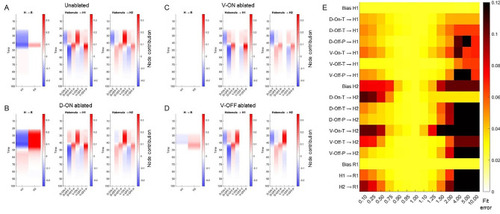Fig. 5
- ID
- ZDB-FIG-240418-29
- Publication
- Cheng et al., 2024 - Computational modeling of light processing in the habenula and dorsal raphe based on laser ablation of functionally-defined cells
- Other Figures
- All Figure Page
- Back to All Figure Page
|
Contributions of each neural network node to the Raphe response. ( |

